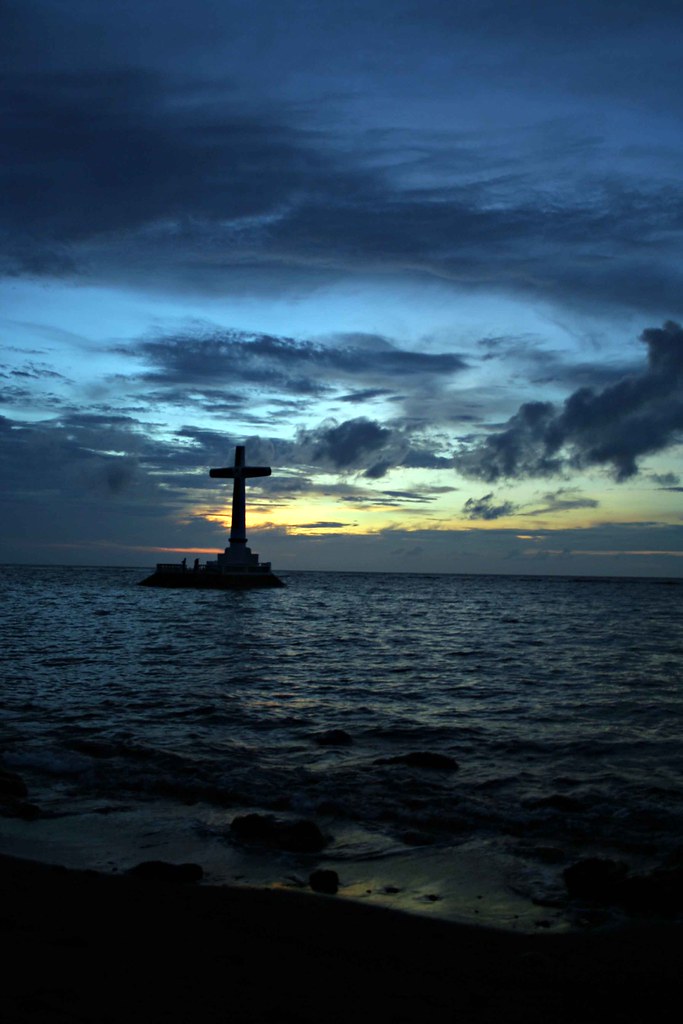As the rising sun clears away the shadows of the previous night over the island of Camiguin, an imposing silhouette of a large cross stands guard over the location of the old capital of the island. Due to a fatal volcanic eruption of Mount Vulcan, the sea now hides the old capital, which was founded during the Spanish era.
According to local historians, Mount Vulcan had four historic eruptions. The first one was in 1827 but records of this eruption were nil. The second one was in 1862 when thick ashes from the crater flowed and overtook people who were fleeing towards the sea, resulting in 326 fatalities. The third one started in 1871. Previous experience had taught some of the Camiguin people of the dangerous whims of Mount Vulcan. Thus, when earthquakes were felt, they fled as far away as possible from the volcano, but some stayed behind. There were spasmodic eruptions and the people who fled decided to stay away until the time when the volcano finally subsided in 1875. But when they returned, they have lost their land and their friends.
The whole capital of Camiguin, with its cemetery, sunk under the sea. In the following years, the sunken land and the gravestones can still be seen when the tide is low. But in 1948 until 1953, Mount Vulcan erupted again, sinking the whole area deeper, to around twenty feet. In 1982, a large cross was built on the solidified lava to mark the site that became the graves of the ancestors of the Camiguin people. It has become a sunken cemetery. Now, it is one of the world most unique diving sites.

According to local historians, Mount Vulcan had four historic eruptions. The first one was in 1827 but records of this eruption were nil. The second one was in 1862 when thick ashes from the crater flowed and overtook people who were fleeing towards the sea, resulting in 326 fatalities. The third one started in 1871. Previous experience had taught some of the Camiguin people of the dangerous whims of Mount Vulcan. Thus, when earthquakes were felt, they fled as far away as possible from the volcano, but some stayed behind. There were spasmodic eruptions and the people who fled decided to stay away until the time when the volcano finally subsided in 1875. But when they returned, they have lost their land and their friends.
The whole capital of Camiguin, with its cemetery, sunk under the sea. In the following years, the sunken land and the gravestones can still be seen when the tide is low. But in 1948 until 1953, Mount Vulcan erupted again, sinking the whole area deeper, to around twenty feet. In 1982, a large cross was built on the solidified lava to mark the site that became the graves of the ancestors of the Camiguin people. It has become a sunken cemetery. Now, it is one of the world most unique diving sites.

Last edited by a moderator:
